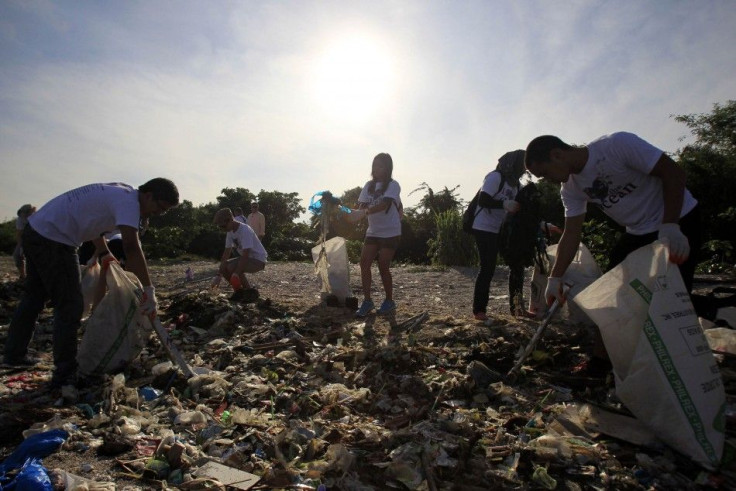World's Oceans Are Choked By Over 269,000 Tonnes Of Plastic

Researchers found about 269,000 tonnes of plastic litter, which include plastic bags, bottles, toys and many more items in the ocean, while studying 24 ship expeditions around the world for a period of 6 years, according to a study publishe on Dec 11. The researchers called the finding "the most scientifically rigorous estimate to date." The amount of litter could be accommodated into 38,500 garbage trucks.
A research director for 5 Gyres Institute, Marcus Eriksen, studies this type of pollution and was also the lead researcher of the study which was published in PLOS ONE, a scientific journal. 5 Gyres Institute is an organisation which has the main aim to reduce the amount of plastic in the oceans.
Eriksen said that there was more plastic pollution than what was being estimated. He said that it was like everything that one can imagine made of plastic. He remarked that it was like Walmart of Target set afloat. These particles also absorb chemical pollutants like PCBs, DDT and other toxins which enter the marine food webs.
According to the Daily Mail, in recent years, experts have warned about how the pollution of plastics was not only killing seabirds, marine mammals and other creatures but also sullied the ocean ecosystems. A discarded fishing net is a plastic object that could kill the dolphins, sea turtles and other creatures by entangling it. In some cases, the fragments might also get lodged in the throats and digestive tracts of the animals.
Eriksen explained that most of the plastic comes in the form of micro-plastic, with a total of 92 percent. Micro-plastics are particles from larger items which become brittle due to the effect of the sunlight and then pounded by waves into small pieces. It is then bitten by either sharks and fish or torn apart in other ways.
The plastic objects are abundant in the coastlines of the North and South Pacific, North and South Atlantic and the Indian Ocean, which are the five sub-tropical gyres of the world. In the center of the gyres, Eriksen said that plastic trash had accumulated into large patches of garbage. He said that the patches acts as "shredders that eviscerate plastic from large pieces to micro-plastics."




















